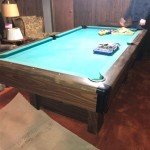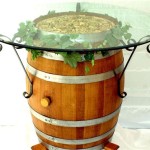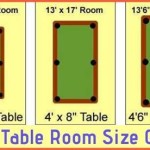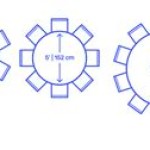What is the Size of a Professional Pool Table Pocket Square?
The dimensions of a pool table are critical for ensuring fair play and consistent gameplay. While aspects like table length, width, and height are commonly discussed, the size and shape of the pocket openings are equally vital. Specifically, the pocket square, which refers to the overall shape and dimensions of the pocket opening, plays a significant role in the challenge and enjoyment of the game. This article details the standardized pocket square dimensions used in professional pool tables, along with the relevant regulations and factors that influence these specifications.
Understanding the specifications of a professional pool table pocket square involves several elements that contribute to the challenge and consistency of the game. These elements are governed by strict regulations set forth by organizations such as the World Pool-Billiard Association (WPA) and other sanctioning bodies. These regulations aim to ensure fair competitions and standardized playing conditions across different venues and tournaments.
The regulations provide a framework for the size and shape of the pocket openings, specifying the distance between the rails at the opening, the angle of the cut, and the depth of the pocket. The goal is to create a pocket that’s challenging enough for skilled players to test their precision and control, while also being forgiving enough to allow for strategic gameplay. Deviations from these standards can significantly impact the difficulty of the game, altering the success rate of shots and affecting overall strategy.
In professional pool, the pocket square is not merely a hole in the table, but a carefully engineered aspect of the game that balances skill and chance. The dimensions ensure that players must demonstrate a high degree of accuracy and cue ball control to successfully pocket balls, adding to the excitement and competitiveness of the sport.
Standardized Pocket Square Dimensions
The standardized pocket square dimensions for professional pool tables are meticulously defined to ensure consistency and fairness in gameplay. These dimensions cover several critical measurements, including the mouth opening, the shelf depth, and the angle of the cut. Understanding these specifications is crucial for anyone involved in the design, manufacturing, or maintenance of pool tables intended for professional use.
The *mouth opening* refers to the distance between the rail facings at the entrance of the pocket. This is the widest part of the pocket and the first challenge a ball must overcome to be pocketed. The WPA specifies that the corner pockets should have a mouth opening between 4.5 inches and 4.625 inches (approximately 11.43 cm to 11.75 cm). The side pockets, which are located along the long rails of the table, have a slightly larger mouth opening, typically between 5 inches and 5.125 inches (approximately 12.7 cm to 13.02 cm). These differences account for the varied angles of approach to the pockets.
The *shelf depth* refers to the distance from the mouth of the pocket to the deepest point where the ball will come to rest. This depth is crucial for retaining balls once they are pocketed and preventing them from bouncing back onto the table. While specific measurements for shelf depth are not explicitly defined in the WPA regulations, the design must ensure that the ball remains securely in the pocket after being captured. It is generally accepted that a shelf depth of at least 2 ball diameters is sufficient.
The *angle of the cut* refers to the angle at which the rails are cut to form the pocket opening. This angle directly influences the difficulty of pocketing balls, as a sharper angle requires greater precision. The WPA mandates that the angle of the cut must be consistent across all pockets on the table. While specific angular measurements are not provided, they are generally understood to be designed to provide a challenging yet fair playing surface. The angle of the cut is usually achieved by skilled table mechanics and relies on experience and an eye for accurate angles.
These measurements collectively constitute the dimensions of the pocket square and are integral to establishing the playability of a professional pool table. Maintaining these standards ensures that players can rely on consistent pocket responsiveness regardless of the tournament location or equipment being used.
Impact of Pocket Size on Gameplay
The size of the pocket square profoundly influences the dynamics of pool gameplay. Different pocket sizes lead to variations in the difficulty level, strategic approaches, and overall scoring patterns. A smaller pocket size generally increases the challenge, necessitating a higher degree of precision and control, while larger pockets can make the game more forgiving and encourage more aggressive shot-making.
When the pocket size is *smaller*, the game becomes significantly more demanding. Players must execute shots with pinpoint accuracy to successfully pocket balls. This increased difficulty leads to a greater emphasis on positional play, where controlling the cue ball's path after each shot becomes paramount. This strategic depth adds another layer of complexity to the game, requiring players to think several steps ahead and plan their shots meticulously. Smaller pockets also tend to reduce the number of accidental or lucky shots, rewarding players who demonstrate consistent skill and precision.
Conversely, *larger pocket sizes* can make the game more accessible and forgiving. Players have a greater margin for error, allowing them to pocket balls with less precise aim. This can lead to faster-paced games with higher scoring rates, as players are more likely to attempt riskier shots. While larger pockets may be more enjoyable for recreational players, they can diminish the strategic depth and skill requirements that define professional-level pool.
The *angle of the pocket cut* also affects gameplay. A sharper angle demands more precision, while a more gradual angle is more forgiving. This angle, combined with the mouth opening, sets the parameters for successful pocketing and impacts the strategy players employ. The ideal angle balances challenge and fairness, ensuring that skilled players are rewarded for their accuracy without making the game overly difficult or unpredictable.
Ultimately, the size of the pocket square significantly shapes the playing experience. Professional pool tables are designed with pocket sizes that strike a balance between challenge and playability, fostering an environment where skill and strategy are paramount.
Regulations and Standards by Sanctioning Bodies
Various sanctioning bodies, such as the World Pool-Billiard Association (WPA), the Billiard Congress of America (BCA), and other regional and national organizations, set forth specific regulations and standards for pool table dimensions, including the pocket square. These standards are essential for ensuring fair play and maintaining consistency across different tournaments and competitions. Understanding these regulations is crucial for manufacturers, tournament organizers, and players alike.
The *World Pool-Billiard Association (WPA)* is one of the most globally recognized sanctioning bodies for pool. The WPA establishes comprehensive rules and guidelines for all aspects of the game, including the specifications for pool table dimensions. Their regulations specifically address the size and shape of the pocket openings, as mentioned previously, emphasizing the importance of precise measurements for professional-level play. The WPA also outlines the acceptable tolerances for these dimensions, ensuring that any slight variations do not compromise the integrity of the game. Their regulations include guidelines for how these measurements are to be taken and enforced, ensuring that tables used in WPA-sanctioned events meet these strict standards.
The *Billiard Congress of America (BCA)* also plays a significant role in setting standards for pool tables. While the BCA often aligns its standards with those of the WPA, it also provides additional guidance and recommendations for manufacturers and tournament organizers. The BCA focuses on promoting and developing the game of pool at all levels, from amateur leagues to professional tournaments. Its regulations ensure that all equipment used in BCA-sanctioned events meets specific standards, contributing to a fair and consistent playing environment.
In addition to these major international bodies, several *regional and national organizations* also enforce their own standards for pool table dimensions. These regulations may vary slightly depending on the specific rules and customs of the region, but they generally adhere to the fundamental principles of fair play and consistency. These organizations often work closely with local pool halls and tournament organizers to ensure that all equipment meets the required standards.
Adherence to these regulations is paramount for maintaining the integrity of the sport. By following the guidelines set forth by these sanctioning bodies, manufacturers, tournament organizers, and players can ensure that professional pool is played on tables that adhere to consistent and fair standards, promoting a level playing field for all participants.

American Pool V Home

Diamond Professional Pool Table West State Billiards Gamerooms

Barrington 7 Ft Urban Drop Pocket Pool Table Perfect For Game Rooms Bl087y23007 The Home Depot

Barrington 7 Ft Urban Drop Pocket Pool Table Perfect For Game Rooms Bl087y23007 The Home Depot

Buffalo Pro Ii Professional Pool Table 8ft 9ft Tables

Dynamic Ii 9ft Brown Pool Table Tables

Pool Table Room Size Guide Home

Barrington 5 Ft Urban Drop Pocket Table With Pool Ball And Cue Stick Set Perfect For Game Rooms Bl066y23011 The Home Depot

Blackball Tables Pool Table White On Cue World

Pool Table Room Size Calculator








